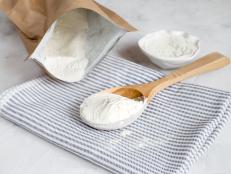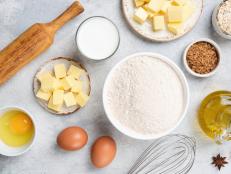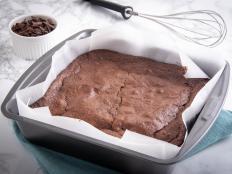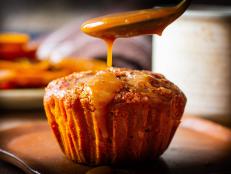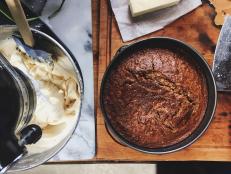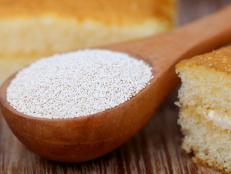How to Substitute Gluten Free Flour for Regular Flour
Tips and tricks for achieving perfect results, every time.

PeopleImages/Getty Images
By Jessie Sheehan for Food Network Kitchen
Jessie Sheehan is a baker and cookbook author.
Gluten-free baking – which is for some a necessity, and for others a choice – is seemingly as popular today, as is baking with all-purpose flour. Bakeries and grocery stores alike offer up a wide variety of gluten-free baked goods, from sandwich bread to bagels to cakes and cookies. And we all agree: having access to a store-bought gluten-free treat is pretty great. But for those of us that like to from-scratch bake, creating gluten-free baked goods in the comfort of our own kitchens has some frustrating challenges.
We wish we could tell you that there’s an easy substitute for all-purpose flour in every baking recipe you could imagine but, sadly, we cannot. Issues arise due to the discrepancy in weight between all-purpose and gluten-free flours, the discrepancy in assembly techniques, in how to test for doneness, and more. But before you resign yourself to a life of “dessert-ing” on apples, read on, as we have a host of suggestions, tips and tricks to turn you into the triumphant gluten-free baker you’ve always dreamed of becoming.
For (Practically) Seamless Gluten-Free Baking, Substitute a Store-Bought Gluten-Free Flour Mix for All-Purpose Flour
Yes, you can make your own gluten-free flour blend, and we have more on doing so below, but because there are three (and probably more) fabulous gluten-free flour blends on the market, we recommend turning to those first when converting a recipe to gluten-free. Not only have they each been well-tested, but they have been on the market for some time and have produced successful results for countless individuals. Cup 4 Cup may have been the first product on the market and it is just that: a gluten-free flour blend that you can substitute for the all-purpose flour in your recipe cup for cup. King Arthur Baking Company’s Measure for Measure and Bob’s Red Mill’s 1 to 1, are also wonderful products; and just like Cup 4 Cup, there are no fussy conversions needed when using these products: if the recipe you wish to convert to gluten-free calls for 2 1/4 cups all-purpose flour, you can merely substitute 2 1/4 cups of one of the above mentioned products. No need to worry about the leavening in the recipe, or the amount of liquid ingredients it calls for (issues that might give you pause if you make your own blend): these three blends are your friends. The only caveat is that we do not recommend using these blends when converting a yeasted recipe to gluten-free. In those instances, when you’d like to make a dough that rises, be it for bread or rolls or pizza, we recommend starting with a recipe that was specifically developed to be gluten-free.
Buy One of the Best Gluten-Free Flour Blends
Or Consider Making You Own Gluten-Free Flour Blend
If you are not interested in purchasing a gluten-free flour blend, you can make your own (and we have included a recipe for one below). Recipes for blends often have a gluten-free flour, plus a starch and perhaps some rice flour in them. And some call for Xanthan gum, too, as it works as a binder in the mix and provides volume to your baked goods. If you do go this route, we have a couple of tips that are worth remembering when doing so.
- Adjust the liquid. First, gluten-free flours are finer than all-purpose flour and absorb more liquid than regular flour; thus, you may want to consider adjusting your liquid ingredients to accommodate for the finer flour you’ll be using.
- Substitute by weight, not volume. Moreover, because they are finer, they weigh less than all-purpose flour, so it is a good idea to substitute your blend for the all-purpose by weight, rather than by volume. If the original recipe calls for 260 grams of all-purpose flour, substitute with 260 grams of your blend.
- Beat the batter more. Because gluten-free flours provide less structure than all-purpose, the batter or dough you make with them may require more beating than that which you are accustomed. The extra beating will provide the structure that the flour itself cannot. Normally, we recommend being careful not to overbeat a dough or batter, but when gluten-free baking, the rules are slightly different.
- Bake your treat a little longer. Finally, the toothpick test for doneness does not always work with gluten-free baked goods, as they tend to look and feel a little wet, even when it is time to pull them from the oven (they set up and “dry out” as they cool). So consider baking your treat a bit longer than what the original recipe calls for and don’t be afraid if it looks a bit underdone when you pull it from the oven – gluten-free baking won’t produce treats that look identical to regular baked goods. In fact, it is a good idea to remember this fact, to avoid frustration when you gluten-free bake. Your gluten-free bakes will look and taste different – not bad different, just different – than your "regular" bakes, and expecting this ahead of time will save you any disappointment along the way.
For Perfect Gluten-Free Baking Every Time, Choose a Flourless Recipe
It may seem somewhat obvious, but for truly 100% foolproof gluten-free baking, consider recipes with either the word “flourless” in the title (it’s a dead giveaway, natch) or those that are naturally gluten-free, such as pavlovas, macaroons, and fudge.
And for Perfect Gluten-Free Baking Every Other Time, Choose a Recipe that Calls for a Naturally Gluten-Free Flour
Again, this might seem obvious, but plenty of recipes are built around a naturally gluten-free flour, such as a polenta or cornmeal cake or an almond cookie. And such recipes are not only bound to work well, but also, they will also highlight the flavor and texture of the gluten-free flour.
Gluten-Free Baking Recipes
Want to see gluten-free baking in action? Check out some of these recipes.
Make Your Own Gluten-Free Flour Mix If you’re feeling adventurous, or just don’t want to purchase a store-bought blend, consider whipping up this gluten-free flour mix. It calls for three different ingredients and once you’ve purchased them once, you’ll have them on hand for all your gluten-free baking needs going forward. Just remember to substitute by weight, not volume for best results.
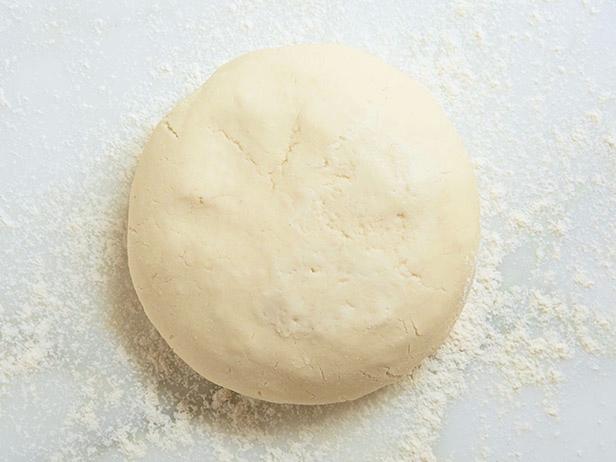
Here is an example of a recipe with a gluten-free flour blend made specifically for a yeasted dough. As Indicated above, it is best not to try to substitute a gluten-free flour blend in a recipe that calls for yeast.

Renee Comet, © 2016, Television Food Network, G.P. All Rights Reserved
Recipes that already have the word “flourless” in the title, such as this one, are a great fool-proof choice when gluten-free baking.

Stephen Johnson, 2016, Television Food Network, G.P. All Rights Reserved
Many gluten-free recipes call for a blend of flours, developed to behave like all-purpose does when baked. Here is an example of one such recipe with its own blend “baked” (sorry, we couldn’t resist) right in.

Matt Armendariz, 2014, Television Food Network, G.P. All Rights Reserved
Often gluten-free recipes call for a single gluten-free flour, like this one which calls for coconut flour. Or the recipe for Chocolate Chip Cookies with Almond Flour, for example, calls just for – yes, you guessed it – almond flour.

Renee Comet, 2016, Television Food Network, G.P. All Rights Reserved
Gluten-free recipes sometimes call for nothing but a starch, which acts like the flour in the recipe, such as this one which calls for tapioca flour.
Related Links:

























